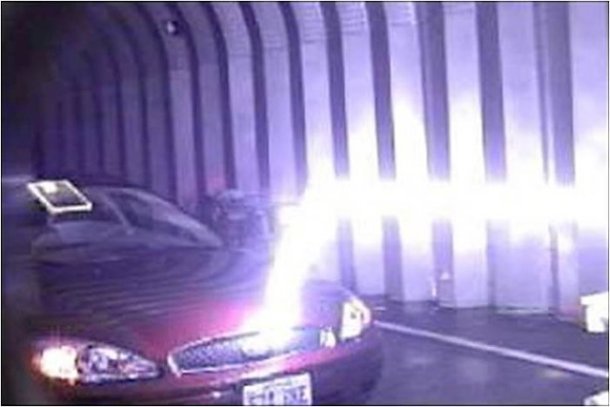US Army Tests 50 Billion Watt Lightning Bolt Laser Weapon

Imagine a weapon capable of firing 50 billion watt-powered laser-guided lightning bolt targets at enemies, and able to put out more power during the duration of the laser pulse than what a large city needs. While that might sound reminiscent of advanced warfare videogame or high-concept blockbuster, the device is in fact entirely real and has already been through extensive testing by the US armed forces.
The Laser-Induced Plasma Channel (LIPC) works in seeking out targets that conduct electricity better than the air and ground that surrounds them. George Fischer, one of the physicists leading the research at the Picatinny Arsenal research lab in New Jersey, explains how the extraordinarily powerful technology works; “If a laser puts out a pulse with modest energy, but the time is incredibly tiny, the power can be huge. During the duration of the laser pulse, it can be putting out more power than a large city needs, but the pulse only lasts for two-trillionths of a second.”
 Test captures show the lightning bolt travelling horizontally, before 'jumping' to nearby objects. Copyright: US ArmyAs Mr Fischer explains, this means the air can be manipulated to “act like a lens…keeping the light in a small-diameter filament”, whereby “using an ultra-short-pulse laser of modest energy makes a laser beam so intense it focuses on itself in air and stays focused in a filament.” If the laser beam is intense enough, an electro-magnetic field strong enough to ‘rip’ electrons from surrounding air molecules is created, leaving behind a beam of plasma that travels along the laser beam, and one that can be directed any which way using mirrors.
Test captures show the lightning bolt travelling horizontally, before 'jumping' to nearby objects. Copyright: US ArmyAs Mr Fischer explains, this means the air can be manipulated to “act like a lens…keeping the light in a small-diameter filament”, whereby “using an ultra-short-pulse laser of modest energy makes a laser beam so intense it focuses on itself in air and stays focused in a filament.” If the laser beam is intense enough, an electro-magnetic field strong enough to ‘rip’ electrons from surrounding air molecules is created, leaving behind a beam of plasma that travels along the laser beam, and one that can be directed any which way using mirrors.
The kind of time-frame in which we can expect our battlefields to become awash with lightning bolts and laser beams is so far undetermined – Fischer has stressed the technology still has a long way to come, and rightly so – though the potential in harnessing such massive energy is clearly huge. For the moment, the team of researchers behind the project are testing a series of improvements that will ensure the technology is rugged enough to survive in harsh and physically-demanding conditions.
Richard Birkett

